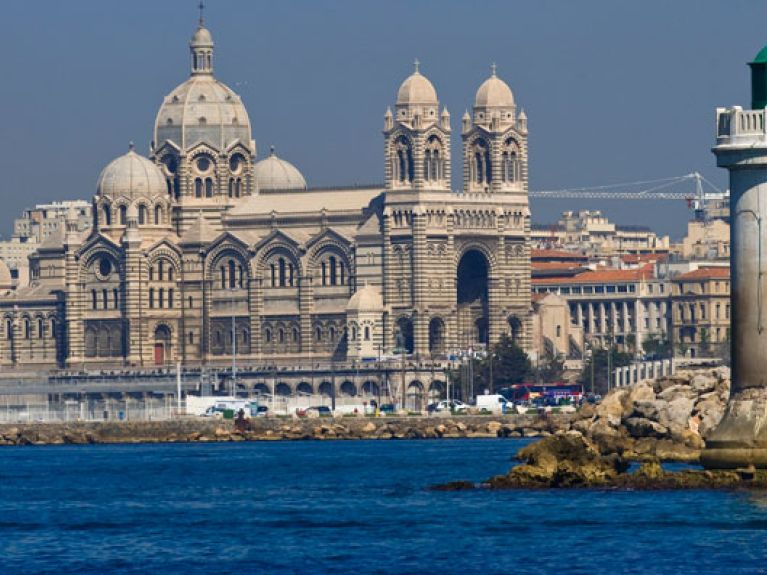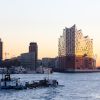Marseille and Košice
Marseille and Košice are European Capitals of Culture in 2013.

Sometimes just waiting for a plane can bear fruits which, even 28 years later, remain fresh, although they have ripened and are in great demand. This happened in 1985, when in an airport VIP lounge, far removed from all protocol, a Greek woman and a French man had the idea for a “Europe of the Cultures”. Whether this frequently cited anecdote is true is anyone’s guess, but the protagonists are authentic: Melina Mercouri, then Greek Minister of Culture, and her French colleague Jack Lang. And because Melina Mercouri doggedly pursued the idea, that same year Athens became the first European Cultural Capital, and a decision was reached by the Council of Ministers of the European Community that every year the wealth and diversity of Europe’s cultural heritage were to be focused in one city – with the aim of bringing the people of the member states closer together and promoting mutual understanding. Culture as a new identification criterion for old Europe.
Florence was chosen in 1986, followed by the capital cities of the European Community, from Lisbon to Stockholm. When Glasgow was designated in 1990, it transpired that this European Union programme, which to date has favoured more than 40 cities, meant so much more than just another art-laden summer spectacle. Thanks to the attendant investments, that Scottish city was able to polish up its image, which had been mousey grey until then, on a long-term basis and spruce up its infrastructure, economy and tourism at the same time. Since the title was changed to European Capital of Culture in 1999, medium-sized cities like Graz and Salamanca, Weimar and Bruges have been favoured. What all these have in common is that their cultural treasures often only require the fresh impetus of continental attention and an injection of capital to garner new fame. The eastern expansion of the EU then brought new candidates into play, such as Sibiu in Romania or Pecs in Hungary. What is more, even Istanbul, Stavanger and Reykjavik, which lie beyond EU borders, have been capitals of culture in tandem with a local community in a member state. Moreover, for a long time now the project has not only attracted tourists and media attention, usually it has also acted as a sustainable driving force for the respective economy.
With Košice, Slovakia’s second largest city, and the southern French port city of Marseille, two Cultural Capitals on the periphery of the Schengen region are moving into the limelight in 2013. In addition to their long multicultural tradition, these two cities are linked by their bridge function. The oldest and second largest French city is regarded as a gateway to the Mediterranean region, especially to Africa, for whose immigrants it has often been a permanent refuge. By contrast, Košice, already a busy trading city in the Middle Ages and under the Danube Monarchy, was transformed into a centre of heavy industry during the socialist era. Today, the city is one of the most eastern outposts of the EU, on the border to Ukraine.
Almost 900 events are planned for the south of France during the Cultural Capital year. Marseille, always overshadowed by Paris, is commemorating its more than 2,500-year-old cultural heritage and its cosmopolitan potential. Its aim is, not least, to rid itself of its image as a centre of crime. Having the highest unemployment rate in the country also creates problems. The Cultural Capital year is intended to bring about a change, internally and externally. A particular focal point is the theme “Méditerranée”, which is being presented in all its aspects in a new museum and ensures the presence of many artists from states bordering the Mediterranean.
Under the motto “Marseille-Provence 2013” – like in “Ruhr 2010” in Germany – the whole region is included, meaning 96 different localities. Alongside the classical art genres, the series of events will concentrate in particular on the region’s turbulent history and current state. In Marseille, the revival of neglected city districts will be celebrated with new music and culture venues in formerly dilapidated industrial buildings, with street theatre, exhibitions and performances, for example, by rap artists. The young creative economy is being especially promoted as a promising future factor for growth. Some 40 building projects in the region will make their contribution towards ensuring that the event has a sustainable effect. In Marseille alone, three spectacular museums designed by international architects are visual evidence of urban renewal.
The several hundred events on the programme in the eastern Slovakian city of Košice are also fuelling new confidence in the future of the multiethnic city. In addition to infrastructure measures and restoration work in the old city centre, a former swimming pool is being turned into an art museum and a barracks site into a culture park. The focus is on artists like the locally-born writer Sandor Marai, who got onto the bestseller lists posthumously, or pop art icon Andy Wahrol, whose parents emigrated from here to the United States. With an unemployment rate of 30%, Košice has great expectations of the creative industries. The picturesque historical centre, the largest listed area in Slovakia, is radiant once again. Among the splendid buildings here, Europe’s easternmost Gothic cathedral stands out, marking the interface between the Russian-Orthodox and Roman-Catholic faiths.
Under the motto “Forward to our traditions” the city is also recalling its Jewish past with a museum in one of the three synagogues. And it is commemorating the Roma, who in Košice constitute the largest Roma population in an eastern European city, at 5,000. They live here peacefully, although not in the pretty city centre. In the socialist era, gigantic prefabricated concrete housing areas were built around the centre and have only been “gradually transformed into attractive living spaces”. The greatest poverty prevails in the Roma quarter called Sputnik 10. Here too, Košice 2013 hopes to achieve a new beginning, not just with its lively music. Karel Adam, director of the Romathan professional theatre, put it in a nutshell in a TV report on a performance by his popular troupe: “If the culture dies, the people die too.” Precisely. Promoting the cultures of all the Europeans was Melina Mercouri’s idea. 28 years ago. ▪

